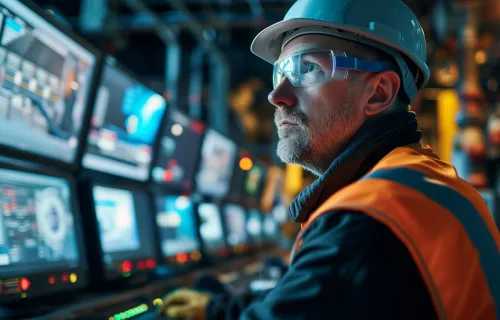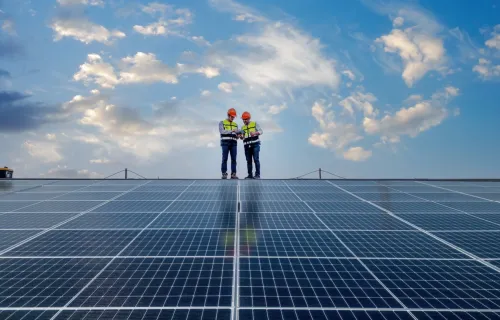Driven by the energy transition and large-scale grid expansion, pressure on the underground infrastructure, such as trenches, is increasing. Ad hoc exchange of information on such infrastructure via multiple applications is not secure or sustainable. Organizations must shift to a data-driven approach, which must start in the field or in the trench. As a result, companies, governments and network operators increasingly rely on CGI for correct and up-to-date data.
The traditional way of processing data related to underground infrastructure assets no longer is tenable, says Henk Cornelissen, Director of Consulting Expert at CGI. “The process of registering and recording an asset is inefficient and often too slow. Information is sent via a jumble of applications and file formats to the back office, which then has to process all that information again. If it turns out that something is not right with that data, which happens quite regularly, then a trench of course has been closed for a long time and people do not know exactly what has been constructed or changed.”
Fortunately, there is a solution. Cornelissen explains, “There is increasing attention for measurement and validation in the trench. It is about making good measurements directly at the source, with good equipment, and validating at the trench whether the data is accepted by the database. In this way, the collected data can be processed immediately and used in the organization in near-real-time."
Smart data exchange
Up-to-date data from assets in the subsurface will only become more important in the future. “The energy transition is putting enormous pressure on the subsurface,” says Cornelissen. “Thousands of kilometers of electricity networks (low, medium and high voltage) have to be installed, and the roll-out of heat networks also will grow. All these things have to be fitted into an overcrowded underground. In addition, grid operators will have to install many hundreds of medium-voltage rooms (the well-known transformer houses) and substations somewhere in the coming years. This is an enormous challenge in areas such as the Randstad, where it is extremely busy.”
Cornelissen identifies another challenge, “The whole picture surrounding the permit process also needs to be accelerated to tackle the congestion problem. At present, such a process takes an average of three to seven years, which is much too long.” He adds that, “Acceleration has to do with smart data exchange. That means no more sending data back and forth between grid operators and the central government, provinces and municipalities, but combining data from all stakeholders, linking it together intelligently and visualizing it in 3D. Then you can immediately see whether such a transformer house fits into the environment and what the effect is on local residents. With the Environment Act, participation is also becoming increasingly important.”
Pilot at the Dutch Ministry of Infrastructure and Water Management
Together with our technology partner IQGeo, CGI offers solutions to make data exchange more consistent and efficient and to speed up validation and registration in the field. Recently, our Infra and Asset Management Lab (iAMLAB) was commissioned by the Ministry of Infrastructure and Water Management to conduct a pilot exploring more efficient exchange of data between grid operator Stedin, water company Evides, the water board, and the municipality of Rotterdam.
“It may sound strange, but breaking open a sidewalk to replace a water pipe and breaking up the same sidewalk again a week later to lay an electricity cable is the rule rather than the exception,” says Huibert Alblas, linked data modeler at CGI.
“That is because data exchange is done mainly ad hoc, and that is far from scalable and efficient. Instead of setting up a web portal and obliging companies to exchange data in a standard format, we investigated how information can be exchanged according to the FAIR principles and using linked data,” adds Alblas. FAIR stands for Findable, Accessible, Interoperable and Reusable. In other words: data that meets the principles of findability, accessibility, interoperability and reusability.
Working in ecosystems
“What this means is that data is made available in a domain model. Companies can make a request to query data, which is then made accessible via linked data,” explains Alblas. “Data therefore remains at the source and is always up-to-date. In this way, all FAIR principles are safeguarded.
Linked data and a domain model are also ideally suited to exchange data with other sectors, without sending information back and forth ad hoc, without being clear on whether the data is up-to-date at all.”
Cornelissen adds, “In principle, the linked data ecosystem is infinite. The model can be further enriched, whereby (public) data from the BGT1, BRO2 and cadastral maps are linked to asset data of network operators via linked data. In order to realize the building assignment, we have to work together in the ecosystems. The advantage of CGI is that we are familiar with all of these organizations. A very important objective of the iAMLAB is therefore to guide organizations in exchanging information in this way and to further embed partnerships in organizations. The interest is great. Acceleration is needed to facilitate the energy transition.”
1Basisregistratie Grootschalige Topografie (BGT), a large-scale topography key register
2Basisregistratie Ondergrond (BRO), the Dutch National Key Registry of the Subsurface
This article previously appeared in the paper version of Ground/road/water construction, in Dutch.






